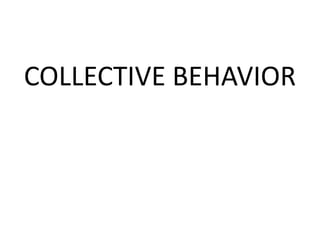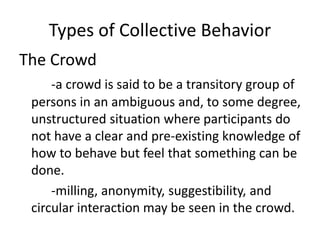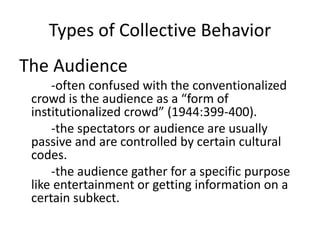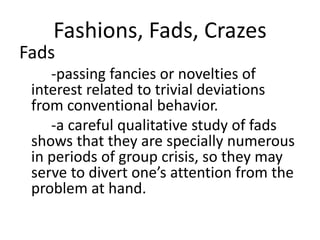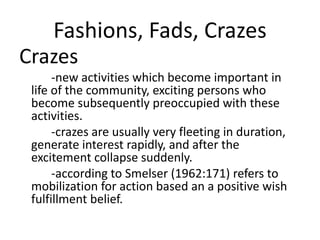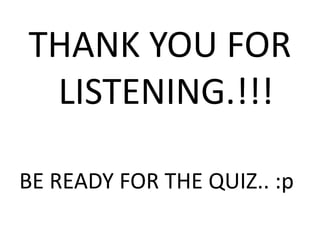Collective behavior refers to forms of social behavior in which people collectively bypass or subvert established institutional patterns. It was once thought to be highly emotional and irrational, but research shows it is more cautious and less emotional. There are various types of collective behavior including crowds, audiences, masses, fashions/fads/crazes, disasters, publics, social movements, and mass communication through media like newspapers, radio, television, and film. While some seek to resist change, collective behavior generally leads to social changes through the establishment of new social norms and values.
